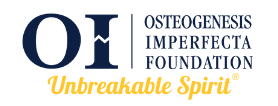SHARE
Child Abuse Issues
Osteogenesis imperfecta (OI) is characterized by bones that break easily. A minor accident may result in a fracture; some fractures may occur while a child is being diapered, lifted, or dressed. It is possible for a person with OI to break a bone without being aware of it. Children who are not diagnosed at birth often suffer a series of painful fractures before healthcare professionals are able to diagnose the condition.
Child abuse is also characterized by broken bones. In recent years, Americans have become increasingly aware of this problem and major efforts have been undertaken to protect children. Child abuse is a pattern of behavior that often is passed down from one generation to the next. Many abusive parents were themselves abused as children. Open, honest discussion of the issue not only can ensure the safety of countless children but can also encourage parents who wish to break the cycle of abusive behavior to seek the help they need.
Diagnosis: OI or Child Abuse?
False accusations of child abuse may occur in families with children who have milder forms of OI and/or in whom OI has not previously been diagnosed. Types of fractures that are typically observed in both child abuse and OI include:
-
- fractures in multiple stages of healing
- rib fractures
- fractures for which there is no adequate explanation of trauma
When the fracture seems incompatible with the reported cause of the injury, child abuse is often suspected. And, unfortunately, when false accusations of child abuse occur, families become victimized.
The following practical advice, together with competent legal advice from a family law attorney, is intended to help parents who have been accused of child abuse.
-
- Each state has its own policy for dealing with child abuse cases. The services of a family law attorney are usually needed. Attorney referral services are generally offered by each state’s Bar Association. If you are not satisfied with the services that your attorney is providing, don’t be afraid to find another attorney to handle your case.
- Physicians and social services caseworkers are required by law to report suspected child abuse. Everyone involved is concerned about what is best for the child.
- Seek the best medical diagnosis possible. It is of utmost importance that the healthcare professional (including, but not limited to, an orthopedist familiar with OI) conducting the evaluation have considerable experience in both diagnosing and treating OI.
- A consultation with a geneticist familiar with OI may reveal a family history of mild OI.
- If the child is taken from the home, parents can request placement with a grandparent or other relative.
- When the problem is resolved, insist that the charges be taken off all records, including computerized records.
For other information about OI and child abuse, contact the Osteogenesis Imperfecta Foundation at (800) 981-2663. Please note: The OI Foundation is not able to provide legal referrals.
